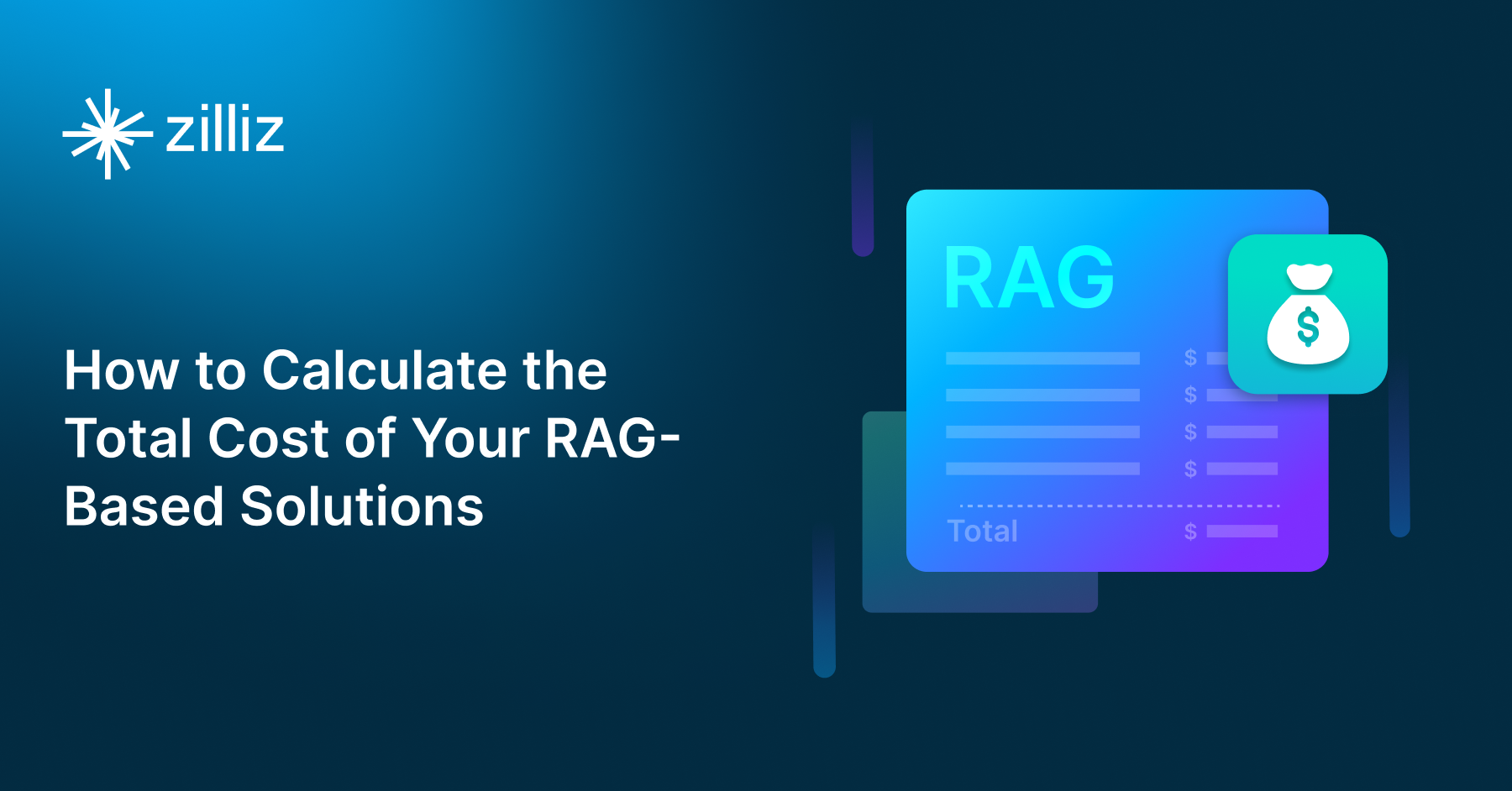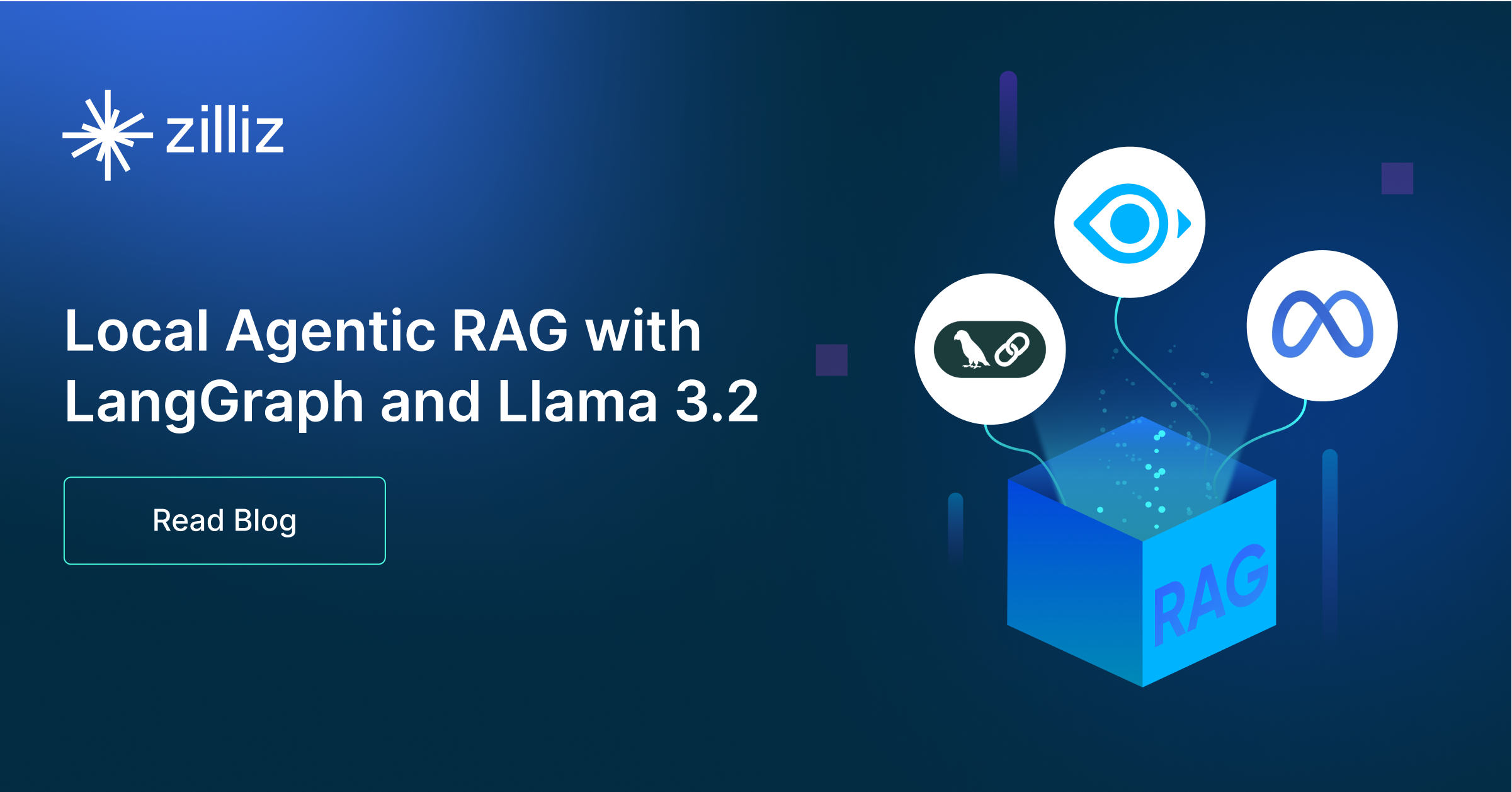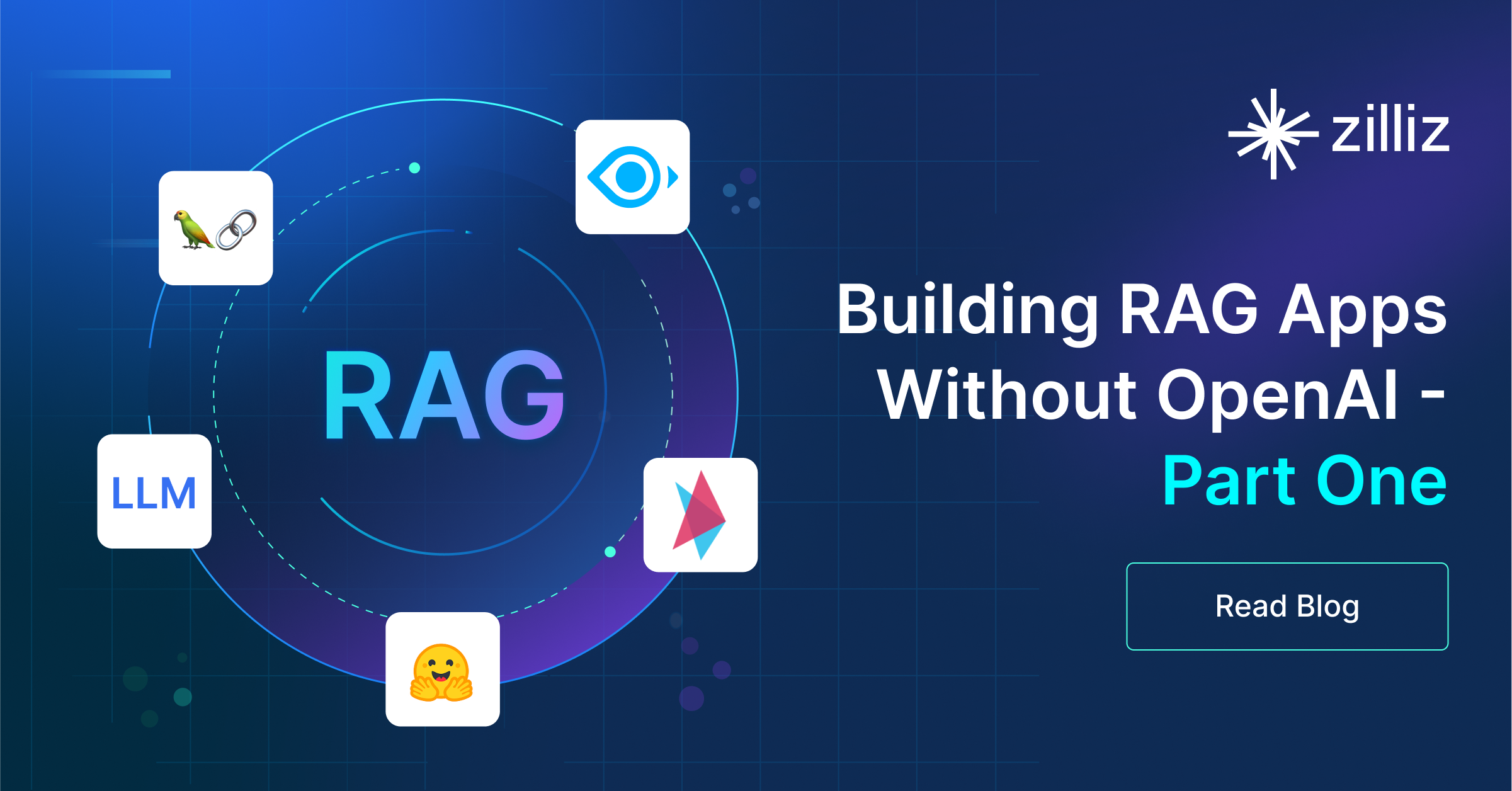Build RAG Chatbot with Llamaindex, Milvus, Cohere Command R+, and voyage-3
Introduction to RAG
Retrieval-Augmented Generation (RAG) is a game-changer for GenAI applications, especially in conversational AI. It combines the power of pre-trained large language models (LLMs) like OpenAI’s GPT with external knowledge sources stored in vector databases such as Milvus and Zilliz Cloud, allowing for more accurate, contextually relevant, and up-to-date response generation. A RAG pipeline usually consists of four basic components: a vector database, an embedding model, an LLM, and a framework.
Key Components We'll Use for This RAG Chatbot
This tutorial shows you how to build a simple RAG chatbot in Python using the following components:
- Llamaindex: a data framework that connects large language models (LLMs) with various data sources, enabling efficient retrieval-augmented generation (RAG). It helps structure, index, and query private or external data, optimizing LLM applications for search, chatbots, and analytics.
- Milvus: An open-source vector database optimized to store, index, and search large-scale vector embeddings efficiently, perfect for use cases like RAG, semantic search, and recommender systems. If you hate to manage your own infrastructure, we recommend using Zilliz Cloud, which is a fully managed vector database service built on Milvus and offers a free tier supporting up to 1 million vectors.
- Cohere Command R+: A state-of-the-art enterprise-focused LLM optimized for high-efficiency Retrieval-Augmented Generation (RAG) and tool use, designed to automate complex workflows. Strengths include multilingual support, scalability, and robust accuracy for enterprise-grade applications. Ideal for automating customer support, data analysis, and knowledge-intensive tasks while ensuring secure, reliable collaboration between AI and human teams.
- Voyage-3: Designed for AI-powered navigation and journey planning, Voyage-3 optimizes route efficiency while providing real-time traffic updates and data insights. Its strengths lie in predictive analysis and adaptive learning, making it ideal for logistics, delivery services, and travel apps that demand reliable and intelligent navigation solutions.
By the end of this tutorial, you’ll have a functional chatbot capable of answering questions based on a custom knowledge base.
Note: Since we may use proprietary models in our tutorials, make sure you have the required API key beforehand.
Step 1: Install and Set Up Llamaindex
pip install llama-index
Step 2: Install and Set Up Cohere Command R+
%pip install llama-index-llms-cohere
from llama_index.llms.cohere import Cohere
llm = Cohere(model="command-r-plus", api_key=api_key)
Step 3: Install and Set Up voyage-3
%pip install llama-index-embeddings-voyageai
from llama_index.embeddings.voyageai import VoyageEmbedding
embed_model = VoyageEmbedding(
voyage_api_key="",
model_name="voyage-3",
)
Step 4: Install and Set Up Milvus
pip install llama-index-vector-stores-milvus
from llama_index.core import VectorStoreIndex, StorageContext
from llama_index.vector_stores.milvus import MilvusVectorStore
vector_store = MilvusVectorStore(
uri="./milvus_demo.db",
dim=1536, # You can replace it with your embedding model's dimension.
overwrite=True,
)
Step 5: Build a RAG Chatbot
Now that you’ve set up all components, let’s start to build a simple chatbot. We’ll use the Milvus introduction doc as a private knowledge base. You can replace it with your own dataset to customize your RAG chatbot.
import requests
from llama_index.core import SimpleDirectoryReader
# load documents
url = 'https://raw.githubusercontent.com/milvus-io/milvus-docs/refs/heads/v2.5.x/site/en/about/overview.md'
example_file = 'example_file.md' # You can replace it with your own file paths.
response = requests.get(url)
with open(example_file, 'wb') as f:
f.write(response.content)
documents = SimpleDirectoryReader(
input_files=[example_file]
).load_data()
print("Document ID:", documents[0].doc_id)
storage_context = StorageContext.from_defaults(vector_store=vector_store)
index = VectorStoreIndex.from_documents(
documents, storage_context=storage_context, embed_model=embed_model
)
query_engine = index.as_query_engine(llm=llm)
res = query_engine.query("What is Milvus?") # You can replace it with your own question.
print(res)
Example output
Milvus is a high-performance, highly scalable vector database designed to operate efficiently across various environments, from personal laptops to large-scale distributed systems. It is available as both open-source software and a cloud service. Milvus excels in managing unstructured data by converting it into numerical vectors through embeddings, which facilitates fast and scalable searches and analytics. The database supports a wide range of data types and offers robust data modeling capabilities, allowing users to organize their data effectively. Additionally, Milvus provides multiple deployment options, including a lightweight version for quick prototyping and a distributed version for handling massive data scales.
Optimization Tips
As you build your RAG system, optimization is key to ensuring peak performance and efficiency. While setting up the components is an essential first step, fine-tuning each one will help you create a solution that works even better and scales seamlessly. In this section, we’ll share some practical tips for optimizing all these components, giving you the edge to build smarter, faster, and more responsive RAG applications.
LlamaIndex optimization tips
To optimize LlamaIndex for a Retrieval-Augmented Generation (RAG) setup, structure your data efficiently using hierarchical indices like tree-based or keyword-table indices for faster retrieval. Use embeddings that align with your use case to improve search relevance. Fine-tune chunk sizes to balance context length and retrieval precision. Enable caching for frequently accessed queries to enhance performance. Optimize metadata filtering to reduce unnecessary search space and improve speed. If using vector databases, ensure indexing strategies align with your query patterns. Implement async processing to handle large-scale document ingestion efficiently. Regularly monitor query performance and adjust indexing parameters as needed for optimal results.
Milvus optimization tips
Milvus serves as a highly efficient vector database, critical for retrieval tasks in a RAG system. To optimize its performance, ensure that indexes are properly built to balance speed and accuracy; consider utilizing HNSW (Hierarchical Navigable Small World) for efficient nearest neighbor search where response time is crucial. Partitioning data based on usage patterns can enhance query performance and reduce load times, enabling better scalability. Regularly monitor and adjust cache settings based on query frequency to avoid latency during data retrieval. Employ batch processing for vector insertions, which can minimize database lock contention and enhance overall throughput. Additionally, fine-tune the model parameters by experimenting with the dimensionality of the vectors; higher dimensions can improve retrieval accuracy but may increase search time, necessitating a balance tailored to your specific use case and hardware infrastructure.
Cohere Command R+ optimization tips
To optimize Cohere Command R+ in a RAG setup, preprocess input queries by chunking large texts and filtering irrelevant context to reduce noise. Use retrieval-friendly parameters like temperature=0.3 for focused responses and max_tokens=512 to balance detail and conciseness. Fine-tune document retrieval with semantic reranking and metadata filtering to prioritize high-relevance sources. Enable confidence_score to validate output reliability, and cache frequent queries to reduce latency. Monitor token usage and response quality to iteratively adjust retrieval thresholds and generation settings for cost-performance balance.
voyage-3 optimization tips
voyage-3 is a versatile model suitable for balanced performance in RAG systems, making efficient retrieval strategies crucial for maintaining low latency and high accuracy. Improve retrieval by leveraging embedding-based similarity search with reranking to ensure relevant context is included. Structure prompts with clear context separation and concise instructions to maximize response accuracy. Set temperature between 0.1 and 0.3 for controlled output while tuning top-k and top-p for flexibility. Implement response caching for frequently queried data to minimize redundant processing and API calls. Utilize parallel processing and request batching to optimize resource efficiency. For multi-model deployments, assign voyage-3 to mid-tier complexity tasks while using larger models for deeper analysis and smaller models for real-time, low-latency queries.
By implementing these tips across your components, you'll be able to enhance the performance and functionality of your RAG system, ensuring it’s optimized for both speed and accuracy. Keep testing, iterating, and refining your setup to stay ahead in the ever-evolving world of AI development.
RAG Cost Calculator: A Free Tool to Calculate Your Cost in Seconds
Estimating the cost of a Retrieval-Augmented Generation (RAG) pipeline involves analyzing expenses across vector storage, compute resources, and API usage. Key cost drivers include vector database queries, embedding generation, and LLM inference.
RAG Cost Calculator is a free tool that quickly estimates the cost of building a RAG pipeline, including chunking, embedding, vector storage/search, and LLM generation. It also helps you identify cost-saving opportunities and achieve up to 10x cost reduction on vector databases with the serverless option.
 Calculate your RAG cost
Calculate your RAG cost
What Have You Learned?
Wow, what an incredible journey we’ve been on together in this tutorial! By integrating LlamaIndex as your framework, the Milvus vector database for efficient storage and retrieval, Cohere Command R+ as your powerful large language model (LLM), and the sophisticated embedding model, you’ve learned how to build a robust Retrieval-Augmented Generation (RAG) system. Each component plays a crucial role: the framework manages data flow, the vector database ensures that you can quickly access relevant information, the LLM crafts meaningful responses, and the embedding model fine-tunes how data is represented. You’re now equipped with the knowledge to create a seamless pipeline that turns raw data into insightful interactions!
But that’s not all! Throughout the tutorial, you also discovered optimization tips to enhance performance, like tweaking parameters for better accuracy and response time. And let’s not forget the handy free RAG cost calculator, which will help you manage your resources effectively as you scale. So, what are you waiting for? Dive into this exciting realm of possibilities! Start building, optimizing, and innovating your own RAG applications today. The future is bright and full of potential, and with the skills you’ve gained, you’re poised to make a real impact. Happy building!
Further Resources
🌟 In addition to this RAG tutorial, unleash your full potential with these incredible resources to level up your RAG skills.
- How to Build a Multimodal RAG | Documentation
- How to Enhance the Performance of Your RAG Pipeline
- Graph RAG with Milvus | Documentation
- How to Evaluate RAG Applications - Zilliz Learn
- Generative AI Resource Hub | Zilliz
We'd Love to Hear What You Think!
We’d love to hear your thoughts! 🌟 Leave your questions or comments below or join our vibrant Milvus Discord community to share your experiences, ask questions, or connect with thousands of AI enthusiasts. Your journey matters to us!
If you like this tutorial, show your support by giving our Milvus GitHub repo a star ⭐—it means the world to us and inspires us to keep creating! 💖
- Introduction to RAG
- Key Components We'll Use for This RAG Chatbot
- Step 1: Install and Set Up Llamaindex
- Step 2: Install and Set Up Cohere Command R+
- Step 3: Install and Set Up voyage-3
- Step 4: Install and Set Up Milvus
- Step 5: Build a RAG Chatbot
- Optimization Tips
- RAG Cost Calculator: A Free Tool to Calculate Your Cost in Seconds
- What Have You Learned?
- Further Resources
- We'd Love to Hear What You Think!
Content
Vector Database at Scale
Zilliz Cloud is a fully-managed vector database built for scale, perfect for your RAG apps.
Try Zilliz Cloud for Free


